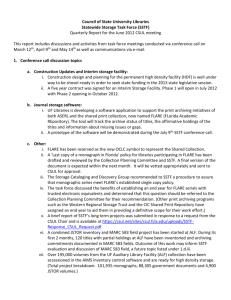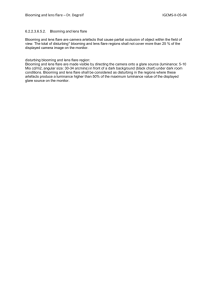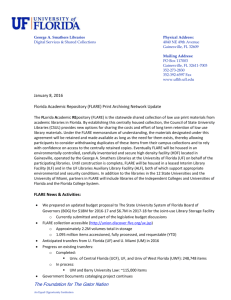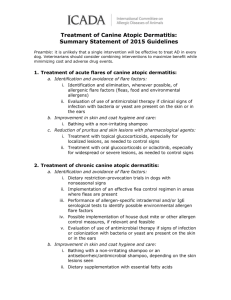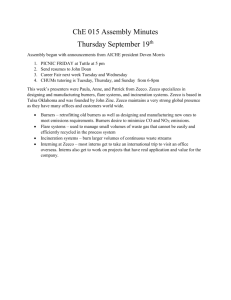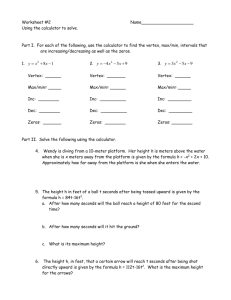white paper - s3.amazonaws.com
advertisement
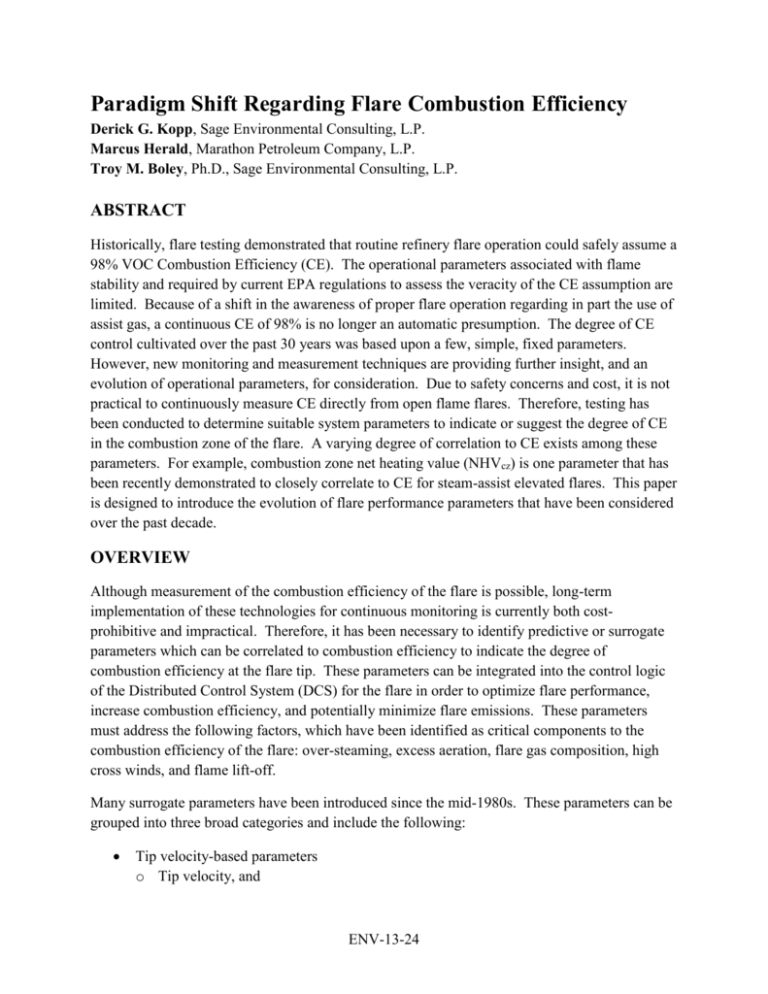
Paradigm Shift Regarding Flare Combustion Efficiency Derick G. Kopp, Sage Environmental Consulting, L.P. Marcus Herald, Marathon Petroleum Company, L.P. Troy M. Boley, Ph.D., Sage Environmental Consulting, L.P. ABSTRACT Historically, flare testing demonstrated that routine refinery flare operation could safely assume a 98% VOC Combustion Efficiency (CE). The operational parameters associated with flame stability and required by current EPA regulations to assess the veracity of the CE assumption are limited. Because of a shift in the awareness of proper flare operation regarding in part the use of assist gas, a continuous CE of 98% is no longer an automatic presumption. The degree of CE control cultivated over the past 30 years was based upon a few, simple, fixed parameters. However, new monitoring and measurement techniques are providing further insight, and an evolution of operational parameters, for consideration. Due to safety concerns and cost, it is not practical to continuously measure CE directly from open flame flares. Therefore, testing has been conducted to determine suitable system parameters to indicate or suggest the degree of CE in the combustion zone of the flare. A varying degree of correlation to CE exists among these parameters. For example, combustion zone net heating value (NHVcz) is one parameter that has been recently demonstrated to closely correlate to CE for steam-assist elevated flares. This paper is designed to introduce the evolution of flare performance parameters that have been considered over the past decade. OVERVIEW Although measurement of the combustion efficiency of the flare is possible, long-term implementation of these technologies for continuous monitoring is currently both costprohibitive and impractical. Therefore, it has been necessary to identify predictive or surrogate parameters which can be correlated to combustion efficiency to indicate the degree of combustion efficiency at the flare tip. These parameters can be integrated into the control logic of the Distributed Control System (DCS) for the flare in order to optimize flare performance, increase combustion efficiency, and potentially minimize flare emissions. These parameters must address the following factors, which have been identified as critical components to the combustion efficiency of the flare: over-steaming, excess aeration, flare gas composition, high cross winds, and flame lift-off. Many surrogate parameters have been introduced since the mid-1980s. These parameters can be grouped into three broad categories and include the following: Tip velocity-based parameters o Tip velocity, and ENV-13-24 o Momentum flux ratio (MFR). Assist gas-based parameters o Steam-to-vent gas ratio (S/VG), and o Stoichiometric air ratio (SR). Heating value-based parameters o Static net heating value (NHV) calculated in the flare header, and o Lower flammability limit (LFL) and Dynamic NHV calculated at the flare tip. The current federal regulations for flares promulgated in 40 CFR 60.18 and 40 CFR 63.11, which were derived from studies conducted in the early- to mid-1980s, provide no clear guidance or restriction on the utilization of assist gas. Current United States Environmental Protection Agency (USEPA) flare regulations in §60.18 and §63.11 include basic requirements generally for two parameters, static flare gas heating value and tip velocity. Flare design guidance from industry trade groups and professional organization in the 1990s and early flare Consent Decree (CD) requirements (mid- to late- 2000s) included recommendations and limitations on the use of assist gas-based parameters. Most notably, a continuously changing combustion zone heating value-based parameter is explained within the most recent flare Consent Decrees. Furthermore, the inclusion of an in-depth analysis of a variable combustion zone heating value-based parameter in an April 2012 publication by the USEPA Office of Air Quality Planning and Standards (OAQPS) is an indication that such a complex scheme to analyze and regulate flares using a variable parameter may be included in future rulemaking for flares. Discussion Tip Velocity-Based Parameters Tip velocity is one of the two parameters promulgated in the original flare regulations.1,2 Tip velocity is the volumetric flow of the flare gas divided by the cross-sectional area of the flare tip. This parameter addresses the concern of flame lift-off, which can occur at high exit velocities when the flame and the flare tip become separated, creating a void directly above the flare tip in which it appears that combustion does not occur. The parameter is based upon research conducted by Marc McDaniel4 and John Pohl5 in 1983 and 1984, respectively. However, at the time, the understanding of the relationship between tip velocity and combustion efficiency was limited by the boundaries of the data sets which were collected by McDaniel and Pohl. The regulatory limits for tip velocity published in the Federal Register1,2 are simply the upper bounds of the exit velocities tested by McDaniel and Pohl, at which optimal combustion efficiencies were still being observed. The research did not indicate how combustion efficiency would be affected at higher exit velocities, and therefore, the body of knowledge regarding the relationship between tip velocity and combustion efficiency was limited. MFR is one of the parameters introduced by the recent flare Consent Decrees8,10 and is espoused by the OAQPS publication, Parameters for Properly Designed and Operated Flares.3 MFR is ENV-13-24 the ratio of the momentum of the flare gas to the momentum of the cross wind. This parameter addresses the concern of high cross winds which may result in a discontinuous wake-dominated or wake-stabilized flow at very low MFR. Discontinuous wake stabilized flow appears as a flame that is immediately adjacent to the exterior of the flare tip body and below the exit plane of the flare tip such that pockets of the flame are detached from the portion of the flare that is immediately adjacent to the exterior of the flare tip body, resulting in low combustion efficiency. The basis for validation of this parameter is research conducted by Gogolek and Hayden.6 Assist Gas-Based Parameters In recent years, the acknowledgement that assist gas can significantly affect overall CE has gained wider acceptance. S/VG is the ratio of steam to flare gas and can be calculated on a mass or volumetric basis. SR is the ratio of air to flare gas, calculated on a mass basis. These parameters address the concern of over-steaming in steam-assisted flares and over-aerating in air-assisted flares, each of which results in the dilution of the heating value of the flare gas. Large amounts of research and data have been collected and compiled regarding these parameters. The OAQPS publication referenced above3, 2010 Texas Commission on Environmental Quality (TCEQ) Flare Study Project Final Report7, and flare CDs8,9 have all published values for S/VG and SR that are expected to indicate the degree of combustion efficiency at the flare tip. Additionally, the American Petroleum Institute (API) Recommended Practice 52110 published a table of suggested steam-to-vent gas ratios for a range of gases being flared, with increasing steam suggested for heavier molecules. While the published values for S/VG and SR have been demonstrated to correlate to combustion efficiency for simplecomposition gas during research testing7, the complex and dynamic composition of industrial flare gas prohibits reliance solely on the published static values. Heating Value-Based Parameters The NHV of the flare gas in the flare header is one of the parameters promulgated in the original flare regulations.1,2 This parameter addresses the concern regarding low combustion efficiency of gases with low calorific value. The original research for this parameter was conducted by McDaniel.4 From his research, a static value was extracted and published in the Federal Register.1,2 However, recent testing by the TCEQ has demonstrated that not all gases exhibit the same combustion profile7, such that not all gases combust with the same efficiency at a static NHV. Furthermore, the focus of the location at which the NHV is calculated has shifted in recent years.11 Many gases may be injected into the flare gas stream (steam, nitrogen, pilot gas, etc.) downstream of the point at which the NHV in the flare header is calculated and may significantly alter the combustion profile of the flare gas at the flare tip. Both the OAQPS publication referenced above3 and the recent flare CDs8,9 incorporate a variable NHV parameter that is calculated at the flare tip. The variable NHV is calculated based upon the individual lower flammability limits (LFL) of each gas that comprises the gas that is combusted at the flare tip. This ensures that the NHV is appropriate for the specific gas composition based upon each ENV-13-24 specific gas that is combusted in the flare tip. There is strong evidence that of all the parameters that have been developed since the mid-1980s, this variable NHV parameter most closely correlates to combustion efficiency and thus currently provides the best indication of the degree of combustion efficiency.6 However, operating a flare based upon a variable NHV parameter requires a significant amount of advanced instrumentation and a robust DCS. SUMMARY Many parameters have been either incorporated into federal flare regulations or specific flare CD requirements over the past 30 years. Parameters that are enforceable only to those with whom the EPA has negotiated the recent flare CDs may provide greater correlation and control of the combustion efficiency at the flare tip. Inclusion of these “new” parameters in federal rulemaking may prove to be that on which the combustion efficiency paradigm of the future is built. However, it is not yet clear which, if any, of the new parameters will be included in the next proposed rule making for flares. Research continues to be conducted with respect to identifying additional parameters upon which to develop the combustion efficiency paradigm to ensure greater than 98% combustion efficiency at the flare tip. REFERENCES 1. 51 FR 2701, General Control Device and Work Practice Requirements. January 1986. 2. 59 FR 12430, Control Device and Work Practice Requirements. March 1994. 3. US EPA Office of Air Quality Planning and Standards (OAQPS), Parameters for Properly Designed and Operated Flares. Report for Flare Review Panel. April 2012. 4. U.S. Environmental Protection Agency. Flare Efficiency Study, EPA-600/2-83-052. July 1983. 5. U.S. Environmental Protection Agency. Evaluation of the Efficiency of Industrial Flares: Test Results, EPA-600/S2-84-095, July 1984. 6. Gogolek, P.E.G., and Hayden, A.C.S. Efficiency of Flare Flames in Turbulent Crosswinds. Presentation given to American Flame Research Committee, Maui, HI. September 2010. 7. The University of Texas at Austin. 2010 TCEQ Flare Study Project Final Report, DRAFT. PGA No. 582-8-862-45-FY09-04. May 2011. 8. United States of America, and the State of Indiana, and the Sierra Club, Save the Dunes, The Natural Resources Defense Council, The Hoosier Environmental Council, the Environmental Integrity Project, The Environmental Law and Policy Center, Susan Eleuterio and Tom Tsourlis v. BP Products North America Inc. 2:12 CV 207. May 2012. 9. United States of America v. Marathon Petroleum Company LP, and Catlettsburg Refining, LLC. April 2012. 10. American Petroleum Institution. Guide for Pressure-Relieving and Depressuring Systems, Publication 521. Fourth Ed. March 1997. ENV-13-24 11. Dickens, Brian. US EPA Flare Activity Overview. Presentation given to National Petroleum and Refining Association, October 2011. ENV-13-24
